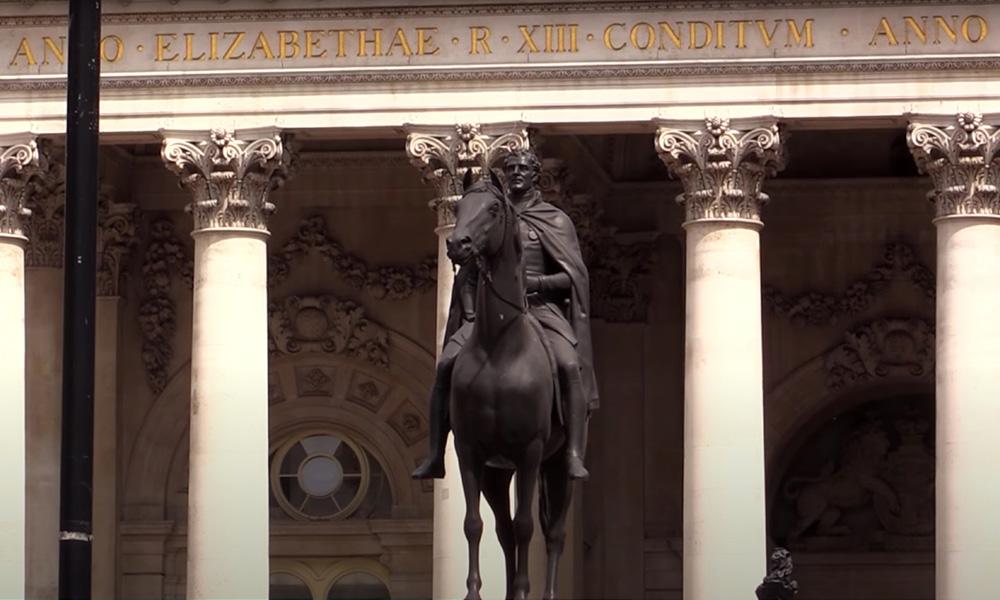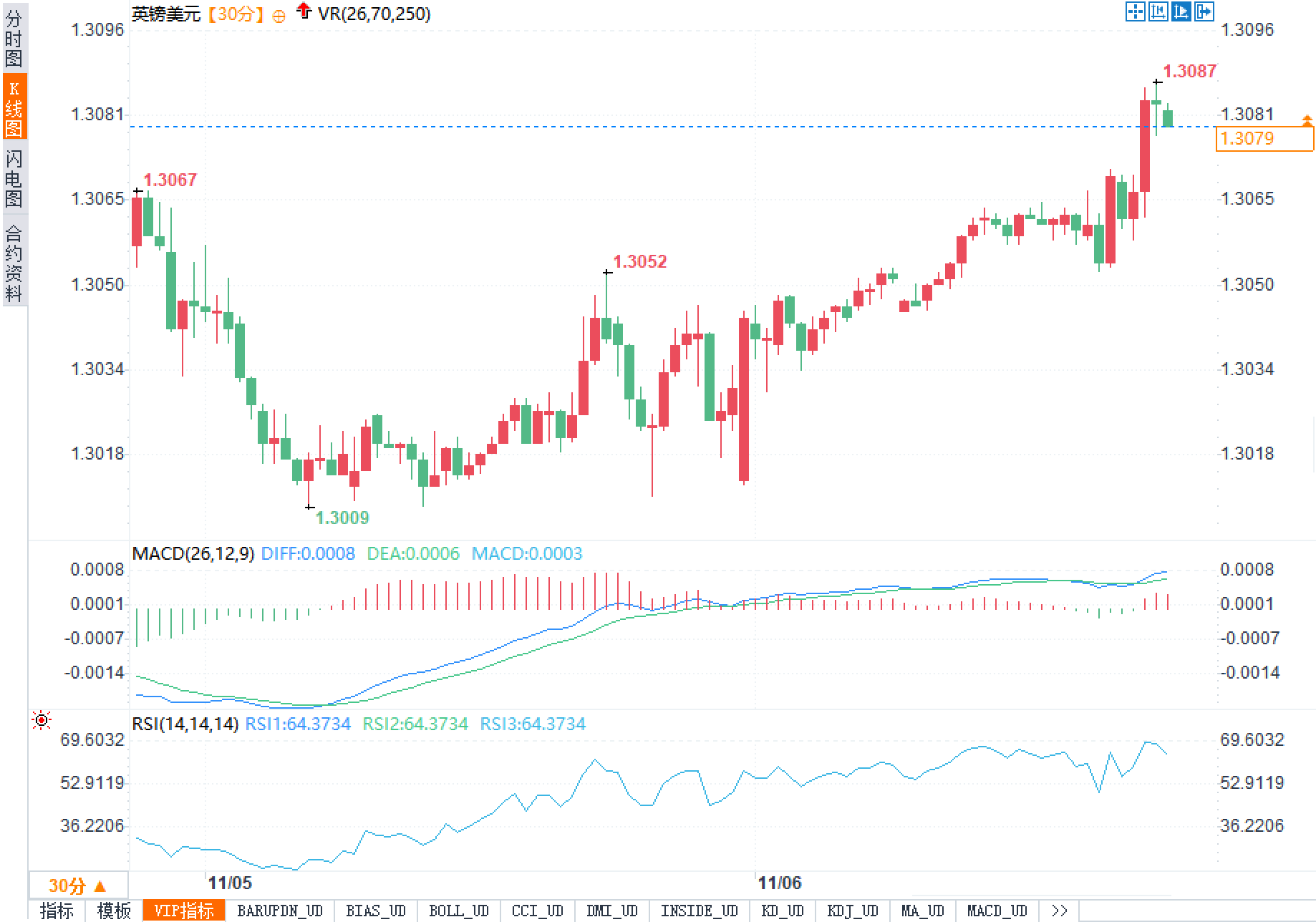The Bank of England's vote is uncertain: a single vote could rewrite the fate of the pound over the next three months.
2025-11-06 17:53:31

From a macroeconomic perspective, the path of interest rates remains the core variable determining the direction of the market in the short term. The Bank of England was widely expected to maintain its policy rate at 4.00% at this meeting, but the low-probability scenario of a surprise 25 basis point rate cut has not been completely ruled out. The underlying logic is as follows: Firstly, recent UK inflation readings show that total CPI is around 3.8% year-on-year, core CPI has fallen to around 3.5%, and service sector inflation remains relatively resilient. This combination reflects a directional decline in price pressures, but with some stickiness remaining. Secondly, signs of cooling in employment and demand are accumulating, and market bets on "further easing starting sooner" are rising. If the Bank of England maintains its current interest rate and communicates that it is "open but cautious about further rate cuts," the downward pressure on the pound from interest rate differentials may continue; if there is a widening divergence among voting members, volatility could increase in the short term.
The fiscal outlook is the second major factor influencing the pound's risk premium. Market discussion focuses on the amplifying effect of downward revisions to medium-term productivity forecasts on the fiscal deficit, coupled with the pressure of a current fiscal shortfall of approximately £22 billion, making the end-of-month budget likely to prioritize "fundraising." Within this framework, if tax and spending arrangements point to "stabilizing credit first, then growth," the pound's risk premium demand will be high, limiting its short-term upward movement in response to positive news. Fiscal uncertainty also transmits to the currency through long-term nominal interest rates and term premiums, increasing the pound's sensitivity to interest rate differentials and risk appetite.
Externally, the US dollar continues to enjoy temporary support from "data and policy narratives." The latest US private sector employment figures show an increase of approximately 42,000, and the services PMI rose to around 52.4, both indicating resilience on the demand side. Correspondingly, market bets on a December rate cut by the Federal Reserve have cooled significantly recently, with the probability falling from previous highs to a more neutral range; the Chairman's post-meeting statement emphasized that "there are no predetermined conclusions for December," leading to a shift in forward guidance towards data reliance. Interest rate differentials and relative growth advantages jointly maintain the upward trend of the dollar, but at the same time, the uncertainties brought about by US fiscal and political processes occasionally restrain the unilateral expansion of the dollar. The offsetting of these two forces makes the high-level tug-of-war of the dollar index a significant exogenous variable for the short-term elasticity of the pound against the dollar.
The combination of strong US data and cooling expectations of further easing on the dollar side means that the pound's rebound is limited by interest rate differentials. If the Fed's new data remains robust before its December meeting, the dollar's pullback is likely to be more of a "rhythmic" rather than a "trend reversal," making it difficult for the pound's relative advantage over the dollar to materialize spontaneously. Conversely, if US data shows a marginal slowdown, a decline in the dollar will provide passive support for the pound, but this support still requires the cooperation of domestic factors in the UK, especially the Bank of England's description of inflation stickiness, its reassessment of the output gap and potential growth, and a clear statement in the budget regarding the medium-term debt path.
From a policy communication perspective, the Bank of England's "wait and see, then assess" approach at its September meeting is likely to continue. If the vote proceeds as expected, with a majority maintaining the current rate and a minority supporting a rate cut, coupled with the statement that "inflation may continue to decline after reaching a temporary peak around October," the pound's immediate reaction is more likely to be a "rise followed by a fall or a period of consolidation." If the wording provides a stronger confirmation of a cooling labor market or a more moderate portrayal of the stickiness of service sector inflation, the front end of the interest rate swap curve may shift further downward, weakening the pound's interest rate differential support. Conversely, if concerns about service sector inflation and nominal wages intensify, market expectations for "maintaining a restrictive interest rate for some time" will rise, potentially narrowing the pound's downside potential, but fiscal uncertainty will still limit a trend reversal.
Technical aspects
On the 30-minute chart, the pound against the dollar has risen in a step-like pattern from a low of 1.3009, currently trading at 1.3079; the short-term high is 1.3087, with previous highs of 1.3067 and 1.3052 being broken successively, indicating a bullish structure. The MACD (26,12,9) is above the zero line, with the DIFF slightly higher than the DEA, and the red bars extending but showing signs of slowing down, indicating positive momentum but weakening marginally. The RSI (14) is around 64, approaching but not touching 70, indicating that the bulls are in control but not to an extreme degree.

The price is currently testing the densely traded and previous resistance zone of 1.3080-1.3090. Further upward movement depends on whether this range can be effectively digested. If it falls back, observe the rhythm and volume changes at 1.3060-1.3050 and 1.3030. A break below these levels would require reconfirmation of the psychological level of 1.3000. Overall, the market is in a slightly bullish, oscillating pattern, with potentially increased volatility during the event period.
Outlook
Three key market logics that may continue to influence the GBP/USD exchange rate can be summarized. First, the data-to-policy chain: the Bank of England's assessment of inflation stickiness and employment signals will continue to dominate front-end interest rates, subsequently affecting the pound's risk premium through interest rate differentials and discount rates. Second, the fiscal-to-credit quality chain: a budget that reflects a "clear medium-term fiscal anchor" and "rebalancing of growth quality" will help suppress term premiums and exchange rate risk compensation; conversely, increased uncertainty will drag down the pound's post-event performance. Third, the external-to-internal chain: if US data and Fed communication maintain a "data-dependent, neutral" tone, the dollar will struggle to break out of its range, but before expectations of further interest rate cuts rise, the pound will still need support from domestic variables to achieve sustained relative gains.
In conclusion, the pound's fluctuations against the dollar within the 1.3000-1.3100 range reflect a triple game: "data and expectations" on the dollar side, "inflation and interest rate differentials" on the UK side, and "certainty and credit" on the fiscal side. Before a clear trend signal emerges, the market is more likely to react quickly but with limited sustainability to incremental information. For the pound to achieve higher-quality relative returns, both inflation stickiness and the fiscal outlook need to improve in tandem; until then, event-driven, range-bound trading is likely to remain dominant.
- Risk Warning and Disclaimer
- The market involves risk, and trading may not be suitable for all investors. This article is for reference only and does not constitute personal investment advice, nor does it take into account certain users’ specific investment objectives, financial situation, or other needs. Any investment decisions made based on this information are at your own risk.





















